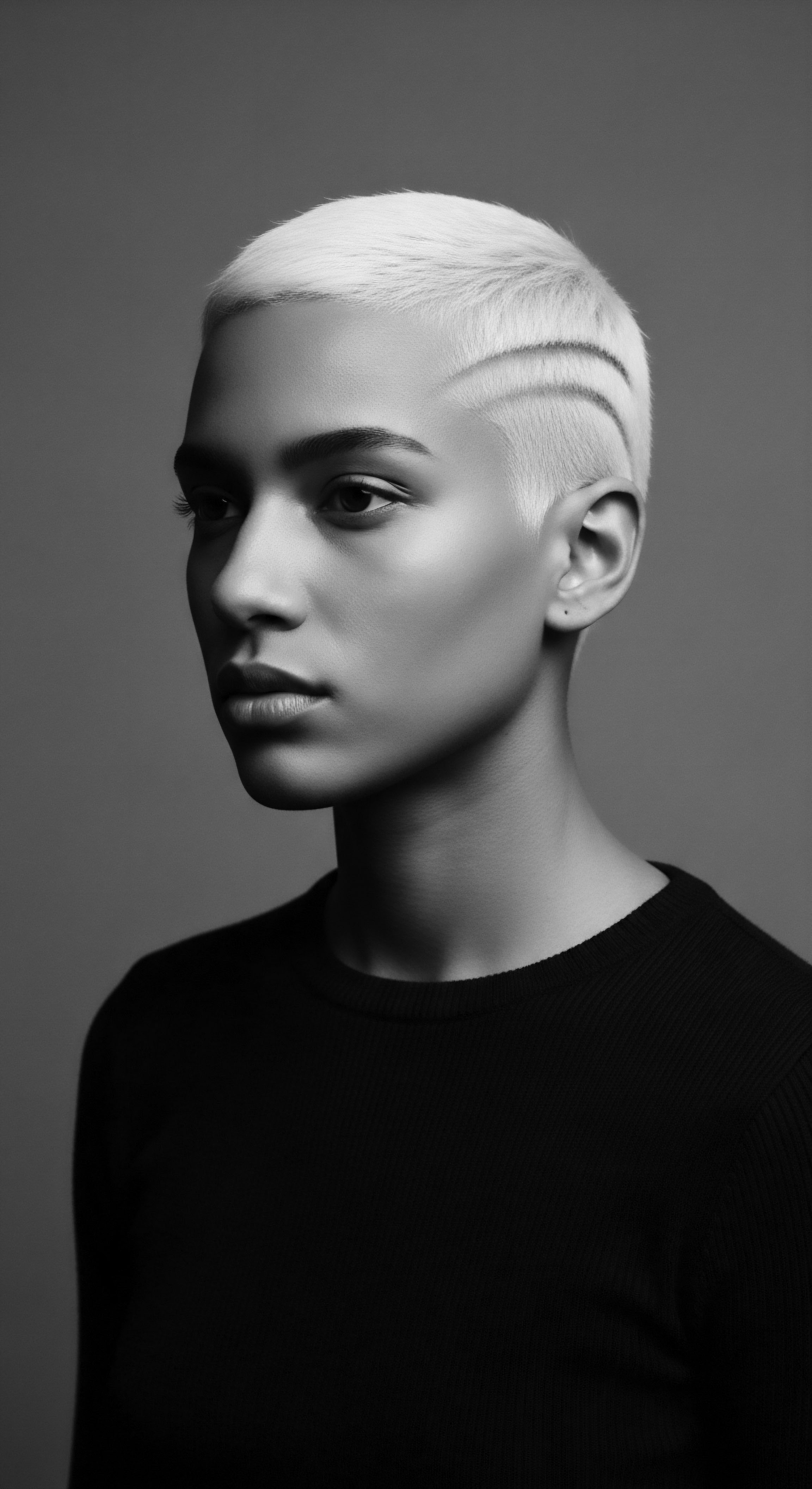
Fundamentals
The very strands that crown us, carrying the wisdom of generations, are not merely adornments; they are living testaments to an unbroken lineage, sensitive to the world around them. When we speak of Environmental Damage within Roothea’s ‘living library,’ we refer to the cumulative impact of external forces – those elemental expressions of our planet and the human-made alterations to its atmosphere – upon the delicate structure and inherent vitality of hair, particularly textured hair. This understanding begins with recognizing hair as a porous, responsive entity, absorbing and reflecting the conditions of its surroundings.
For our ancestors, intimately connected to the rhythms of the earth, the effects of the sun’s fervent gaze, the wind’s persistent whisper, or the water’s varying mineral composition were not abstract scientific concepts. They were lived realities, shaping the daily rituals of hair care and the botanical wisdom passed from elder to apprentice. The recognition of hair’s vulnerability to these forces formed the bedrock of early protective practices. Imagine the sun-drenched landscapes of the African continent, where generations learned to shield their coils from relentless UV radiation, a primary agent of environmental wear.
The practice of applying rich, emollient butters derived from indigenous plants served as a natural barrier, a tactile shield against the sun’s intensity, preventing the desiccation and weakening of the hair shaft. This intuitive knowledge, born of observation and necessity, speaks to the foundational understanding of environmental stressors long before laboratories quantified molecular changes.
Environmental Damage, in its simplest interpretation, denotes the external pressures from our surroundings that diminish hair’s inherent health and vitality.
Consider the daily interaction of hair with the very air we breathe. Beyond the visible dust particles, the atmosphere carries invisible agents, including particulate matter and gaseous pollutants, which settle upon the hair surface and can permeate the cuticle. Over time, these airborne elements can contribute to oxidative stress, altering the hair’s protein structure and diminishing its natural luster.
For communities living in diverse geographies, from coastal villages where sea salt mist might dehydrate strands, to bustling urban centers where soot and industrial byproducts coat everything, the environment always presented a unique set of challenges to hair’s wellbeing. The ancestral response was often one of adaptation and innovation, utilizing locally available resources to cleanse, fortify, and protect.
- Sun Exposure ❉ The relentless ultraviolet rays, particularly UVA and UVB, degrade the hair’s protein bonds and melanin, leading to dryness, brittleness, and fading of natural hair color. This was keenly observed in sun-intensive regions, leading to practices of covering hair or applying natural oils.
- Wind Exposure ❉ Constant exposure to wind can cause mechanical damage, tangling strands, and stripping away moisture, making hair more susceptible to breakage. Protective styles, often intricate and culturally significant, offered a shield against these forces.
- Water Quality ❉ The mineral content of water, specifically hard water rich in calcium and magnesium, can accumulate on hair, leading to dullness, dryness, and reduced elasticity. Ancestral communities often sought out softer water sources or used natural chelating agents.
The initial understanding of Environmental Damage, therefore, is rooted in this elemental dialogue between hair and its surroundings. It is the recognition that hair, like all living things, seeks equilibrium, and when that balance is disturbed by external aggressors, its structural integrity and aesthetic presentation are compromised. This basic understanding is the first step in appreciating the sophisticated, heritage-driven solutions that developed over millennia to preserve the integrity of textured hair.
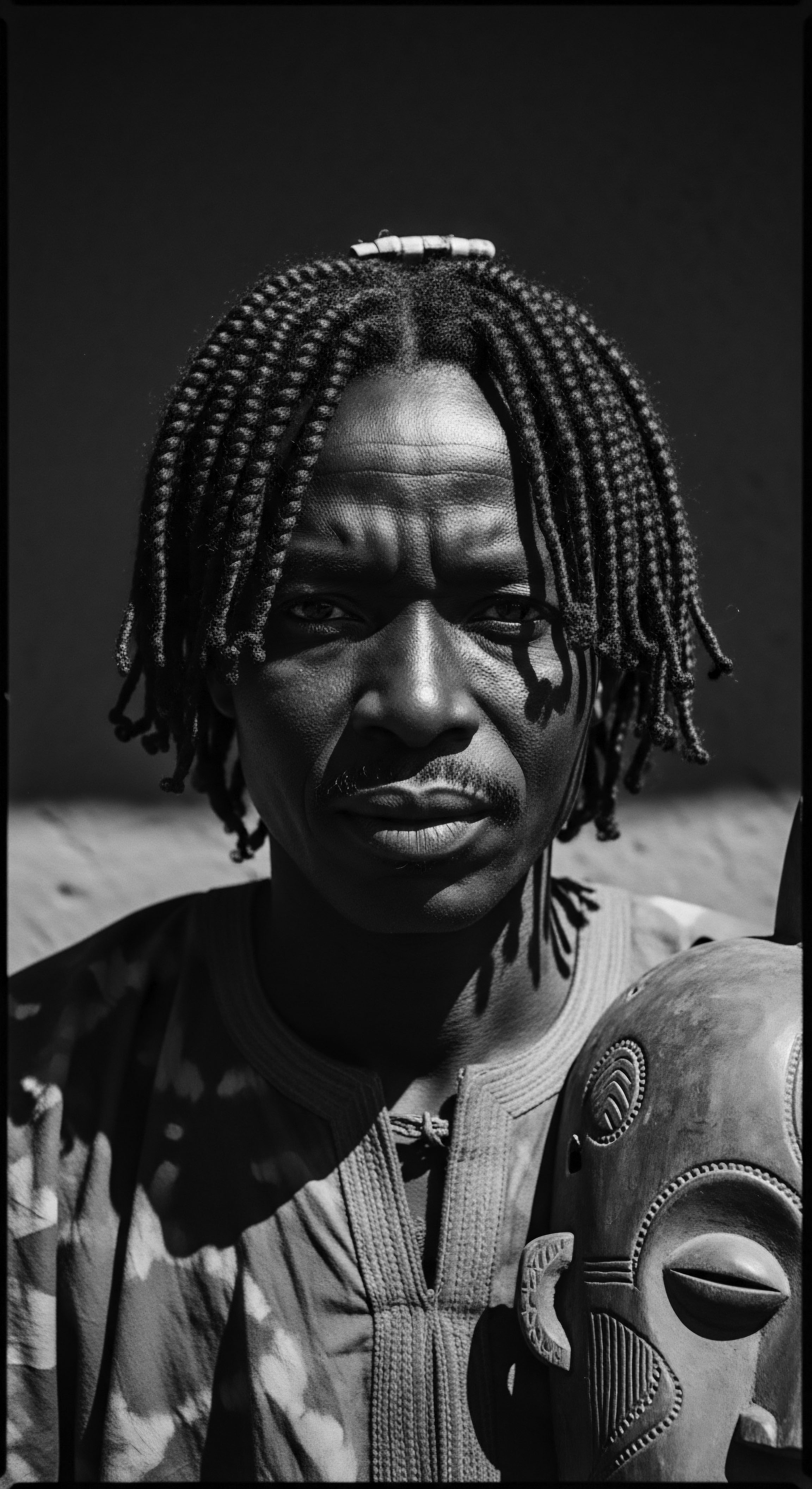
Intermediate
Moving beyond the foundational understanding, the intermediate interpretation of Environmental Damage delves into the specific mechanisms by which external factors compromise the integrity of textured hair, and how these challenges have shaped the nuanced care traditions within Black and mixed-race communities. Here, the concept of hair as a historical archive becomes even more vivid; each strand bears the silent markings of its environmental journey, a testament to the conditions it has endured and the care it has received. The unique helical structure of textured hair, with its varied curl patterns and often greater surface area, presents both remarkable resilience and specific vulnerabilities to environmental stressors.
The very architecture of a textured strand, with its intricate twists and turns, means that the cuticle, the outermost protective layer, can be more exposed and prone to lifting. This increased porosity can allow environmental aggressors to penetrate more readily into the hair’s cortex, where the crucial protein bonds reside. For example, exposure to airborne pollutants, a concern particularly heightened during periods of rapid urbanization and industrialization, introduces microscopic particles and chemicals that can disrupt the delicate lipid layer of the hair, leading to increased friction and diminished sheen. The collective experience of these environmental assaults, whether from the dust of arid lands or the smog of burgeoning cities, propelled the development of sophisticated cleansing and moisturizing rituals.
The intricate architecture of textured hair renders it uniquely responsive to environmental pressures, prompting ancestral care practices rooted in observation and botanical wisdom.
Consider the impact of humidity and dryness, two ends of a spectrum that significantly affect textured hair. In humid environments, hair can absorb excess moisture, causing the cuticle to swell and potentially leading to frizz and loss of curl definition. Conversely, in dry climates, hair readily loses its internal moisture, becoming brittle, stiff, and susceptible to breakage.
Ancestral knowledge, often expressed through the careful selection of natural ingredients, directly addressed these climatic fluctuations. In areas of high humidity, lightweight botanical extracts might have been favored for their ability to maintain balance without oversaturation, while in arid regions, heavier butters and oils provided deep, sustained hydration, forming a protective seal against moisture loss.
The evolution of hair care practices within diasporic communities offers a compelling study of adaptation to new environmental realities. When enslaved Africans were forcibly transported across the Atlantic, they encountered vastly different climates, water sources, and botanical landscapes. Their traditional ingredients and methods were often inaccessible, yet the imperative to care for their hair, a symbol of identity and spiritual connection, remained. This forced ingenuity led to the incorporation of new, locally available resources – often those used for skin or general health – into hair care, transforming the practice into a profound act of cultural preservation and resilience against environmental and systemic degradation.
| Environmental Stressor Intense Sun (UV) |
| Ancestral Observation & Impact on Hair Hair became dry, brittle, color faded, scalp irritated. |
| Traditional Care Response (Heritage Practice) Application of shea butter, palm oil, or plant extracts like aloe vera for sun protection and moisture retention. Covering hair with headwraps. |
| Environmental Stressor Arid Wind & Dry Air |
| Ancestral Observation & Impact on Hair Hair lost moisture rapidly, leading to stiffness and breakage. |
| Traditional Care Response (Heritage Practice) Regular oiling with nourishing plant oils (e.g. castor oil, coconut oil) to seal in moisture and provide a protective barrier. |
| Environmental Stressor Hard Water (Mineral Deposits) |
| Ancestral Observation & Impact on Hair Hair felt rough, dull, and accumulated residue. |
| Traditional Care Response (Heritage Practice) Use of acidic rinses from fermented fruits or natural clays to clarify and remove mineral buildup. Seeking out rainwater for washing. |
| Environmental Stressor Atmospheric Pollutants (Soot, Dust) |
| Ancestral Observation & Impact on Hair Hair felt dirty, heavy, and appeared lackluster. |
| Traditional Care Response (Heritage Practice) Frequent, gentle cleansing with natural saponins (e.g. soap nuts) and protective styling to minimize exposure. |
| Environmental Stressor These responses highlight a deep, embodied knowledge of environmental impact on hair, informing practices that endure across generations. |
The intermediate understanding of Environmental Damage thus acknowledges the intricate interplay between hair’s unique structural properties, the specific characteristics of its surroundings, and the dynamic, adaptive nature of heritage hair care. It is a story of ingenuity and deep connection to the natural world, where every twist and coil of textured hair whispers tales of environmental resilience and ancestral wisdom. The understanding here is not just about identifying the problem, but about appreciating the rich tapestry of solutions that have been woven into the fabric of Black and mixed-race hair heritage.
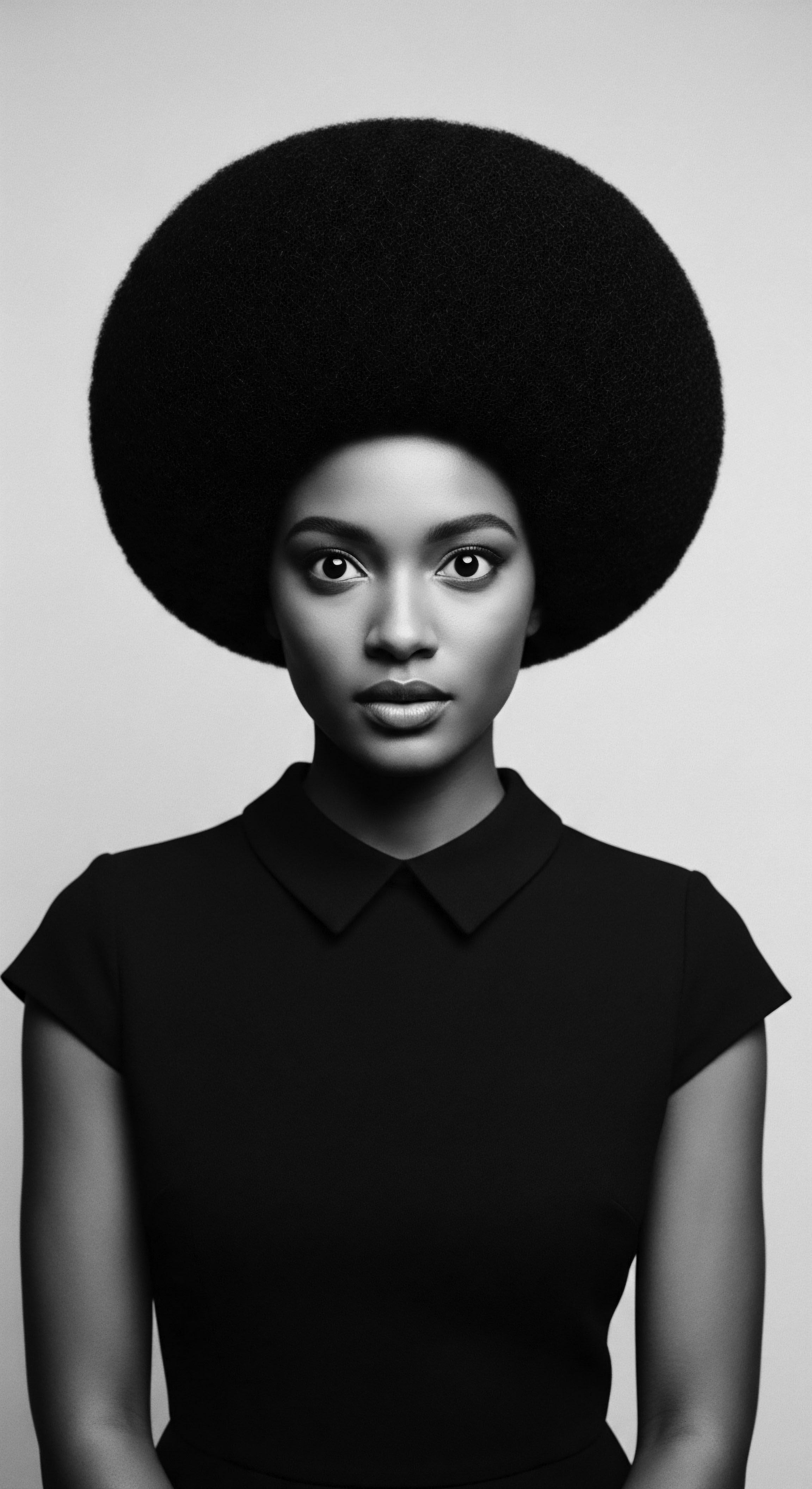
Academic
From an academic standpoint, the Environmental Damage to hair, particularly within the context of textured hair heritage, constitutes a complex biophysical phenomenon resulting from the interaction of the hair fiber with exogenous stressors. This definition extends beyond simple aesthetic alterations to encompass quantifiable changes at the molecular and ultrastructural levels, influencing the hair’s mechanical properties, chemical composition, and overall health. The inherent characteristics of textured hair, including its elliptical cross-section, varied curl patterns, and often fewer cuticle layers at points of curvature, render it particularly susceptible to the deleterious effects of environmental aggressors, making its study within a heritage framework a vital area of inquiry.
The primary environmental assailants include ultraviolet (UV) radiation, atmospheric pollutants (particulate matter, volatile organic compounds, heavy metals), variations in humidity and temperature, and the chemical composition of water. UV radiation, specifically UVA and UVB, induces photo-oxidative degradation of the hair’s keratin proteins and melanin. This process generates reactive oxygen species (ROS) that initiate lipid peroxidation and protein cross-linking, leading to the formation of cysteic acid and the cleavage of disulfide bonds.
The consequence is a measurable decrease in tensile strength, increased porosity, reduced elasticity, and a noticeable alteration in hair color due. The unique distribution of melanin in textured hair, while offering some intrinsic photoprotection, does not render it immune to these damaging effects, necessitating external protective measures.
Atmospheric pollution presents another significant challenge. Microscopic particles, often laden with polycyclic aromatic hydrocarbons (PAHs) and heavy metals, deposit onto the hair surface. These pollutants can induce oxidative stress, leading to a cascade of reactions that compromise the hair’s protein matrix and lipid layer.
Studies have shown that chronic exposure to urban air pollution can result in increased hair surface roughness, reduced hydrophobicity, and a diminished ability to retain moisture. This is particularly relevant for individuals residing in densely populated urban centers, where historical and contemporary patterns of residential segregation often place Black and mixed-race communities in closer proximity to industrial zones and areas of high vehicular emissions.
Environmental Damage fundamentally alters hair’s biophysical properties, impacting its strength, elasticity, and moisture balance through complex molecular interactions.
A critical, though often under-examined, aspect of Environmental Damage, particularly within the heritage context, is the impact of water quality. Hard water, characterized by high concentrations of dissolved minerals like calcium and magnesium ions, can precipitate onto the hair shaft. This mineral buildup, known as calcification, leads to increased surface friction, reduced manageability, and a dull appearance.
Furthermore, these mineral deposits can react with hair care products, diminishing their efficacy and potentially exacerbating dryness and breakage. For communities reliant on specific water sources, whether well water in rural ancestral lands or municipal water in urban settings, adapting to water quality has been a continuous, though often unarticulated, aspect of hair care wisdom.
A powerful historical example illuminating the profound connection between Environmental Damage and textured hair heritage can be found in the experiences of African Americans during the Great Migration (roughly 1916-1970). As millions moved from the rural South to the industrial North and West, they encountered starkly different environmental conditions. The humid, agricultural environments of the South gave way to colder, drier climates with significantly higher levels of industrial air pollution from factories and coal-burning heating systems. This drastic shift in environmental exposure had tangible effects on hair health.
For instance, the prevalent use of coal for heating and industrial production in northern cities like Chicago, Detroit, and Pittsburgh led to widespread airborne particulate matter and soot. A study published in the Journal of Environmental and Public Health (Wang et al. 2011) examining the impact of air pollution on human health, while not exclusively focused on hair, details the pervasive presence of particulate matter (PM2.5 and PM10) in urban centers during this period. The historical accounts and oral traditions within Black communities from this era often speak to the challenges of keeping hair clean and moisturized amidst the pervasive grime.
Hair, which was already prone to dryness due to its structural properties, became even more susceptible to desiccation and breakage from these environmental aggressors. The constant need for cleansing to remove soot and pollutants, often with harsh soaps, further stripped the hair’s natural oils.
This environmental assault necessitated adaptations in hair care. Traditional practices of oiling and protective styling became even more critical, though often modified with newly accessible, albeit sometimes less effective, commercial products. The legacy of this environmental shift is still felt today, influencing product development and care routines aimed at mitigating the effects of urban pollution on textured hair.
The understanding of Environmental Damage, therefore, is not merely a scientific pursuit; it is an act of historical empathy, acknowledging the enduring impact of environmental forces on the lived experiences and cultural practices of Black and mixed-race communities. The challenges faced by these communities due to environmental factors, both historical and contemporary, underscore the need for culturally informed approaches to hair health and product development.
The academic delineation of Environmental Damage thus requires a multidisciplinary approach, drawing from trichology, environmental science, historical anthropology, and cultural studies. It seeks to quantify the damage, identify the causal agents, and critically analyze the adaptive strategies developed within specific cultural contexts. This rigorous investigation reveals how ancestral knowledge, often dismissed as anecdotal, frequently aligns with contemporary scientific understanding of protective and restorative hair care, providing a profound validation of heritage practices.
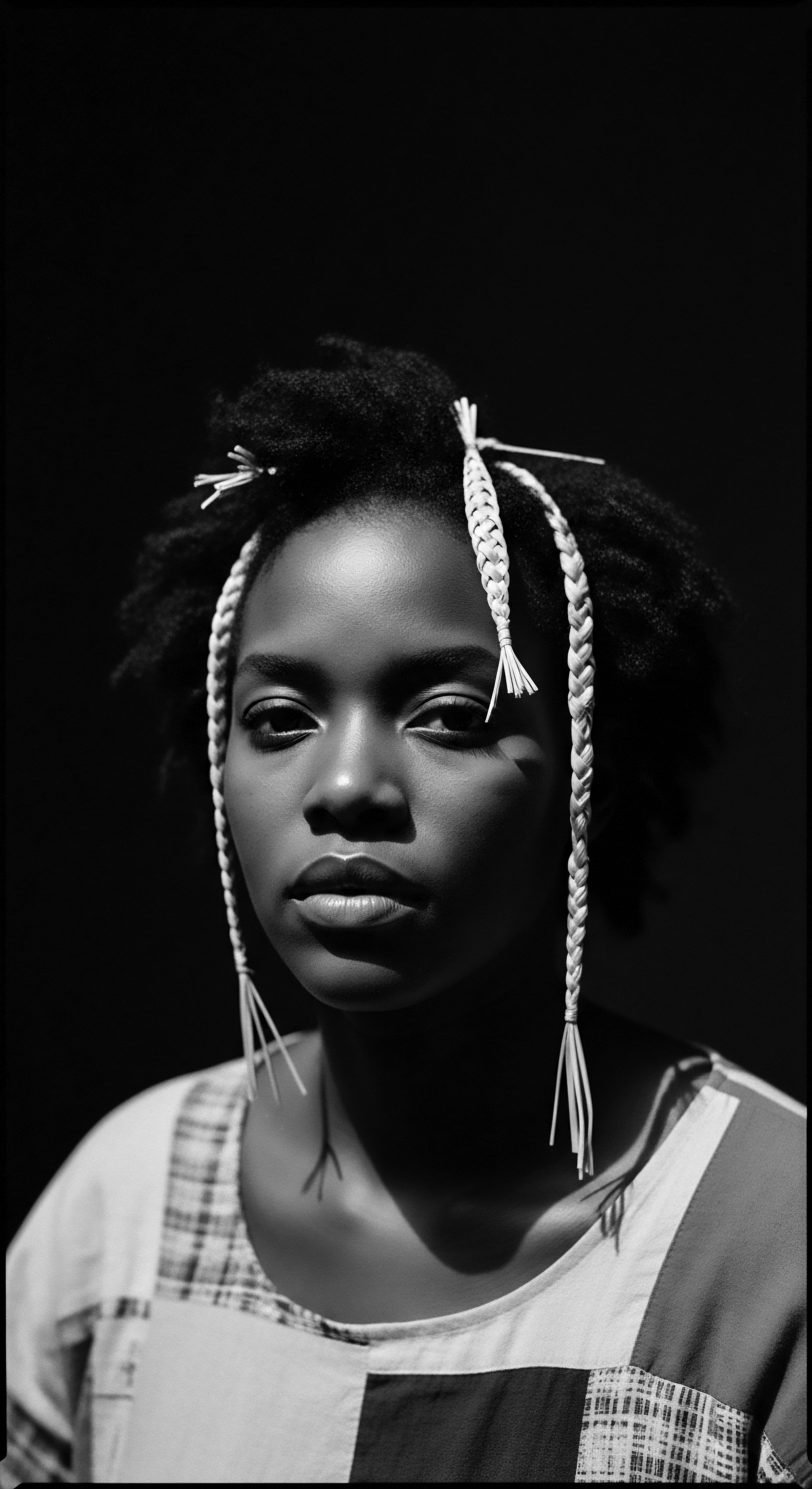
Reflection on the Heritage of Environmental Damage
The journey through the nuanced interpretations of Environmental Damage reveals a profound truth ❉ our hair, particularly textured hair, is a sensitive chronicler of time, place, and ancestral wisdom. It whispers tales of sun-drenched savannas, of windswept migrations, of urban resilience against unseen pollutants. The challenges posed by the environment were never mere obstacles; they were catalysts for ingenuity, inspiring generations to listen to the earth’s whispers and craft rituals of care that honored the very soul of the strand.
This living archive of hair, carrying the imprints of environmental exposure, also carries the indelible mark of human spirit – the persistent dedication to preservation, to beauty, to identity, even in the face of adversity. The understanding of Environmental Damage, therefore, becomes a pathway to deeper reverence for the enduring heritage of Black and mixed-race hair traditions. It reminds us that every application of a protective oil, every careful braid, every gentle cleanse, echoes practices honed over centuries, responses to the very breath of the world.
As we look forward, armed with scientific insight and ancestral memory, the ongoing conversation around Environmental Damage for textured hair is not one of despair, but of empowerment. It calls upon us to recognize the continuous thread of care that connects us to our forebears, to learn from their adaptive genius, and to apply this wisdom to our contemporary environmental challenges. The ‘Soul of a Strand’ ethos beckons us to approach hair care not as a superficial act, but as a sacred dialogue with our environment, our history, and our inherent beauty. The enduring significance of protecting our coils, curls, and waves from environmental wear is a timeless testament to our resilience, a celebration of a heritage that continues to flourish, unbound and vibrant.
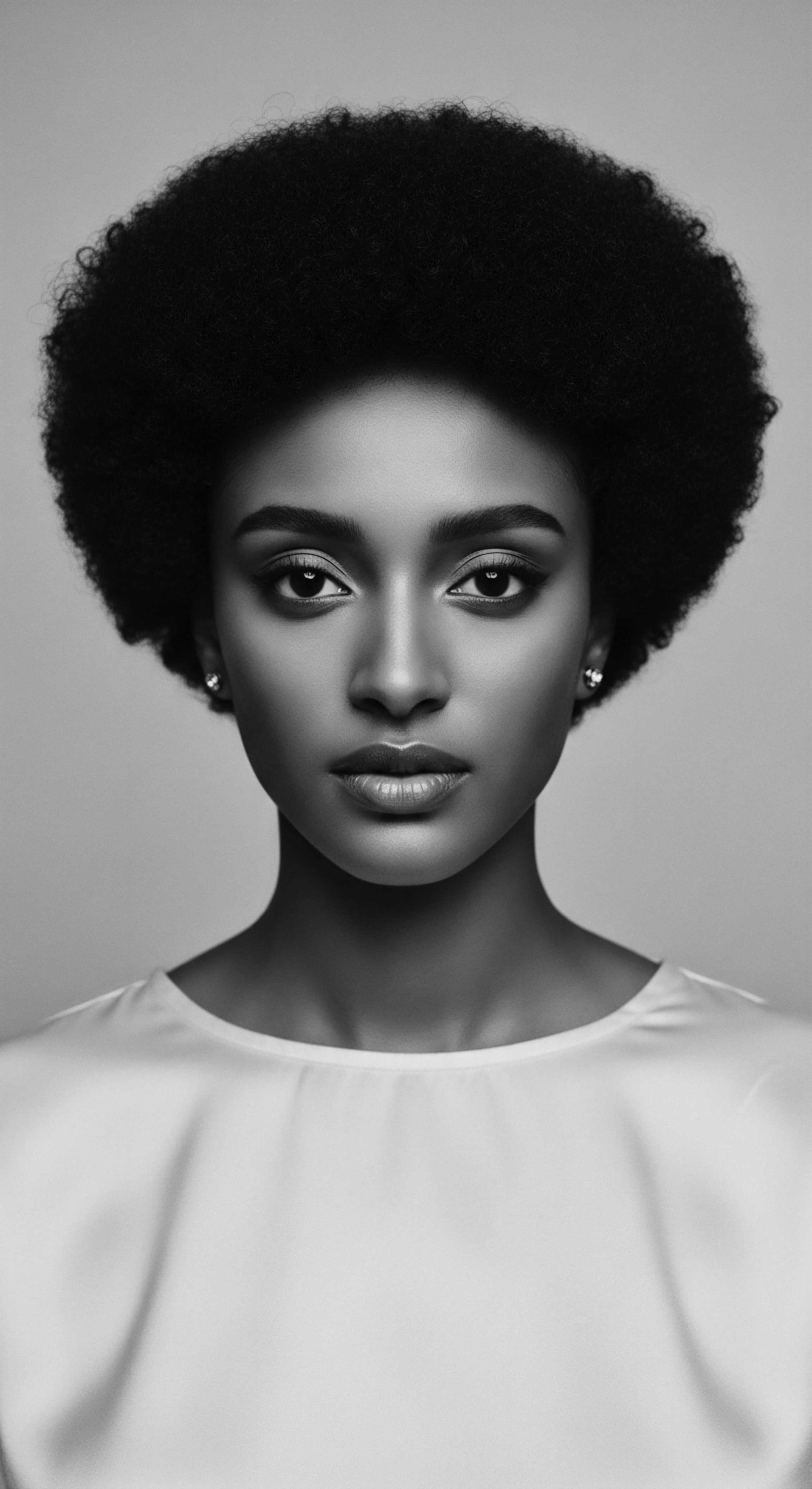
References
- Wang, J. Zhang, F. & Li, Y. (2011). The impact of air pollution on human health ❉ A review of recent studies. Journal of Environmental and Public Health.
- Akerele, O. (1993). African medicinal plants and their uses in traditional health care. Journal of Ethnopharmacology.
- Gamble, T. (2001). Hair as a social marker in African American culture. International Journal of Cultural Studies.
- Khumalo, N. P. & Gumedze, F. (2010). Hair breakage in women of African descent ❉ An analysis of its causes and management. Journal of Cosmetic Dermatology.
- Robbins, C. R. (2012). Chemical and physical behavior of human hair. Springer.
- Brooks, J. A. (2006). Black hair ❉ Art, style, and culture. Rizzoli.
- Trombetta, S. & Di Martino, R. (2016). Environmental factors affecting hair structure and function. International Journal of Cosmetic Science.
- Blay, K. A. (2020). Hair stories ❉ Untangling the roots of Black hair in America. University of Georgia Press.
